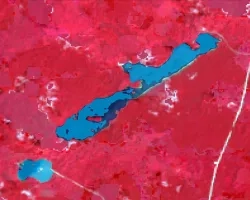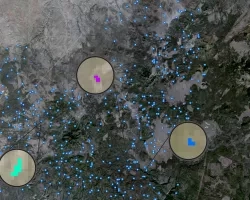
Himalayan countries, including Bhutan, have become vulnerable to warming trends which result in increasing temperature and variable rainfall and snowfall. By combining phenological and meteorological data, Earth observation platforms and sensors were used to assess trends in precipitation, temperature, and vegetation phenology in Bhutan from 1996 through 2017. This project studied precipitation using Climate Hazards Center Infrared Precipitation with Station data, analyzed temperature using the Famine Early Warning System Network Land Data Assimilation System, incorporated elevation data from the Shuttle Radar Topography Mission, and assessed vegetation phenology using Aqua and Terra Moderate Resolution Imaging Spectroradiometer (MODIS) to evaluate climate variability and its effects on Bhutan. In situ temperature and precipitation data were also collected from the Himalayan Environmental Rhythm Observation and Evaluation System (HEROES) project and Bhutan’s National Center for Hydrology and Meterology. Modeled and in situ data showed similar trends in precipitation and temperature for the Thimpu, Chhukha, and Gasa regions. Aqua and Terra MODIS phenology data were variable from year to year. However, the data suggested a late onset of spring green up. Partners at the Bhutan Foundation and locally in Bhutan can use this information to better understand and monitor climate variability and replicate these methods for future analysis.



